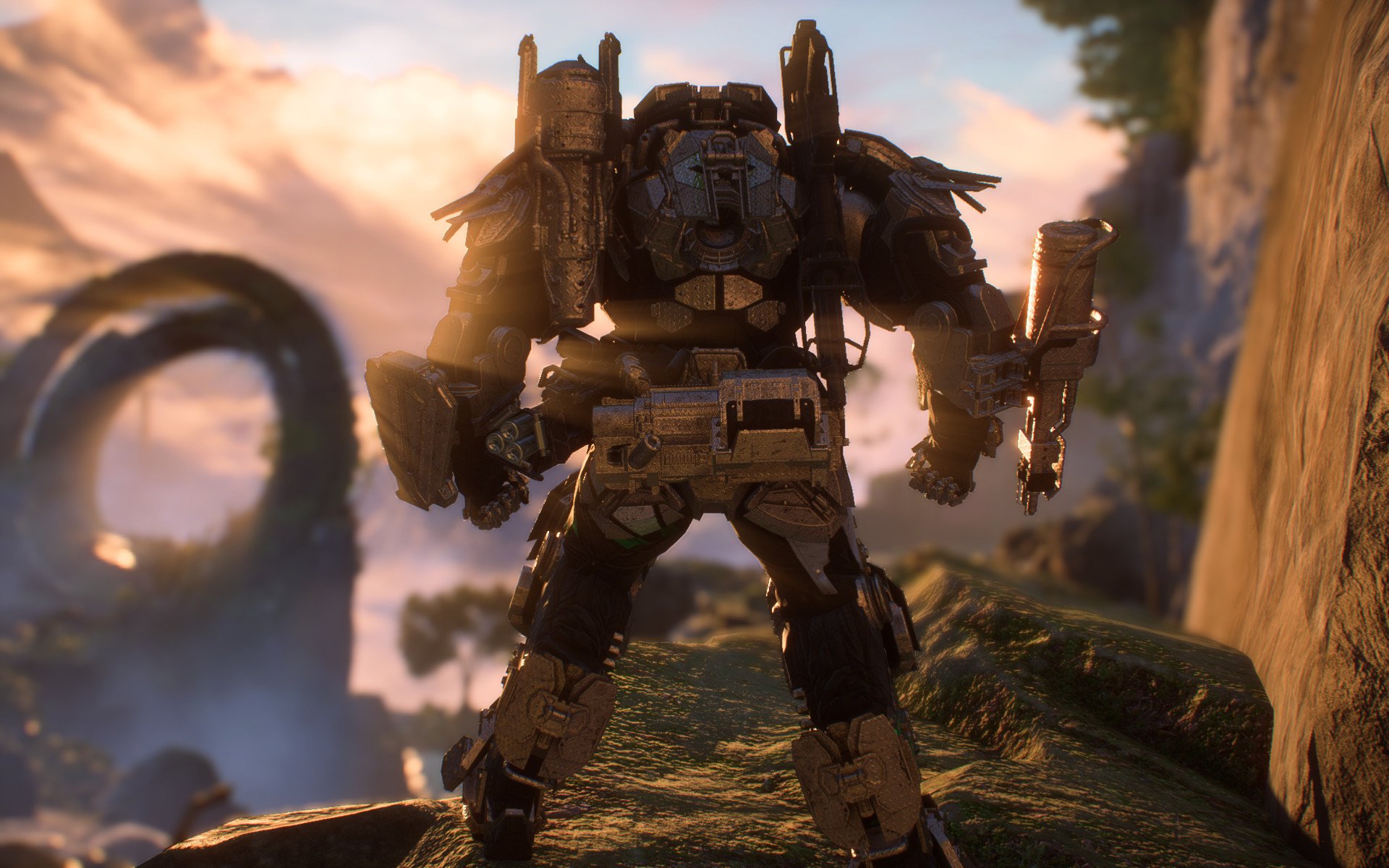Anthem, BioWare's latest in a long line of science-fiction games, represents a bold new direction for the studio. After several critically acclaimed singleplayer RPGs ranging from classics like Star Wars: Knights of the Old Republic to the masterpiece that is Mass Effect 2, BioWare has crafted something wholly different that feels like a mixture of several different experiences. Destiny, The Division, Diablo, and BioWare's own RPG titles are all clear inspirations for Anthem and its design philosophies. But does this recipe work?
Yes and no. There's an amazing game here, but it's being smothered by countless issues. As much fun as I've had during my 30 hours with Anthem, I can't deny that part of me feels like I should wait for improvements to arrive before continuing my journey.
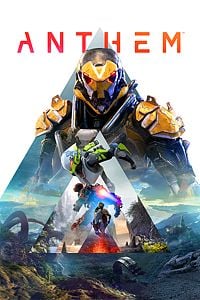
$60Bottom line: Anthem offers amazing combat, astounding visuals, and excellent all-around production value, but suffers from baffling design choices and awful writing that hold it back from being something truly special.
For
- Addictive combat.
- Gorgeous presentation.
- Immersive open world.
- Great foundation for customization.
- Solid lore foundation.
Against
- Forgettable story and dialogue.
- Bland mission design.
- Key systems are poorly explained.
- Looting systems need improvement.
- Loading screens galore.
About this review
This review was conducted on a PC equipped with an AMD Ryzen 5 2400G CPU, a Radeon RX 480 GPU, and 16GB of RAM. The copy of Anthem was provided to Windows Central by the publisher.
Gameplay and combat
In Anthem, players spend most of their time in groups of four, taking the fight to enemies in weaponized mech suits called javelins. These are an absolute blast to take control of; whether you're gracefully soaring through the air, hovering above enemies and raining hell on them from above with your arsenal, or sprinting up to foes and smashing them in the face with brutal melee attacks, the javelins feel absolutely excellent.
There are four classes of javelin available, and each one has its own strengths and weaknesses. The Storm is a long-range "mage" class that has low health, but extremely high damage potential. The Colossus, my personal favorite, is a tank with tons of health and close-range brawling capabilities that demand the attention of foes. The Interceptor is an agile ninja javelin that trades health and range for colossal melee damage, and the Ranger is a jack-of-all-trades type that's good at everything, but best at nothing.
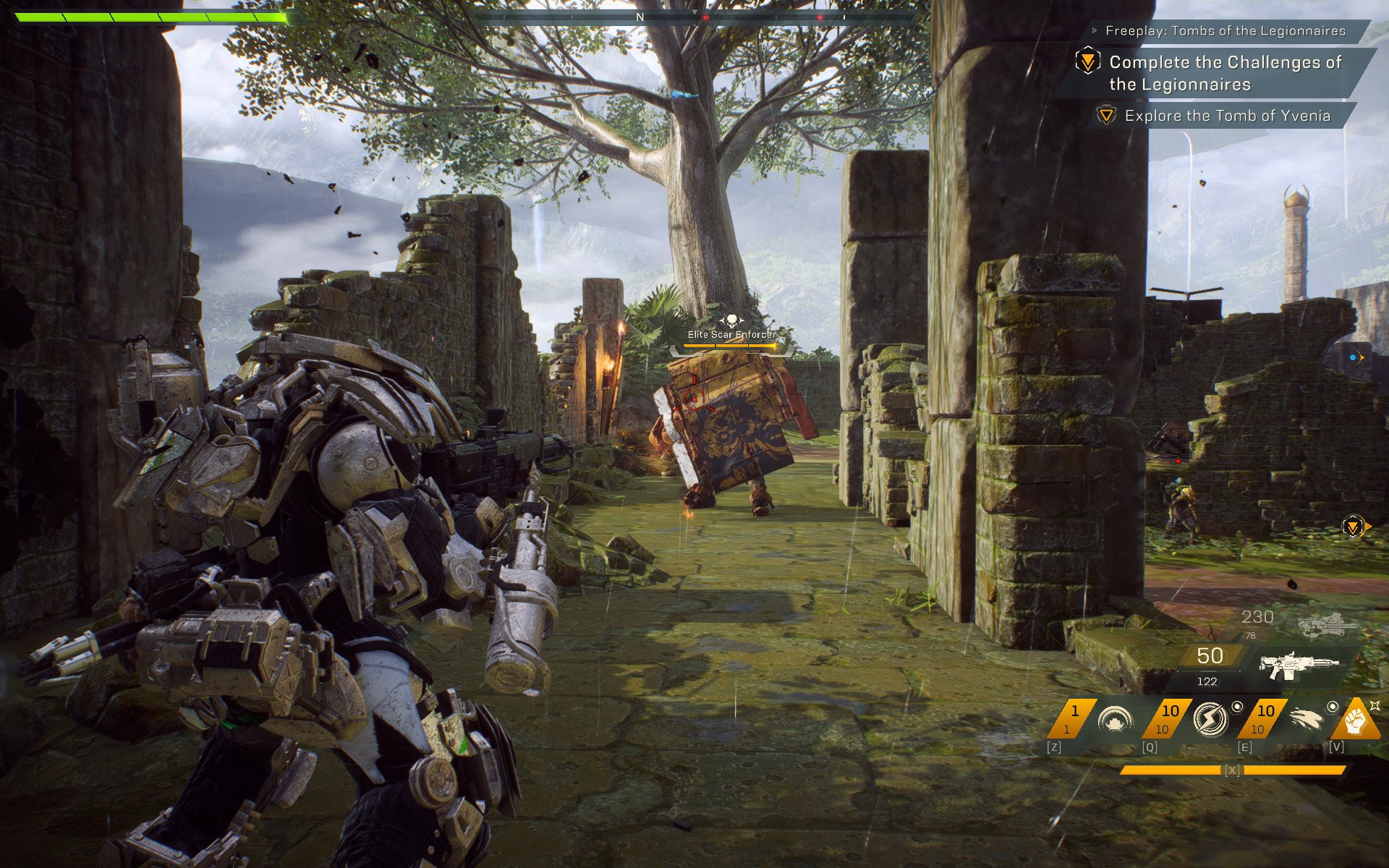
There are plenty of ways to use the classes, and the various guns in the game feel great, too, but the secret to what makes Anthem so fun is its abilities. The abilities are part of a combo system, with primers that set up combos, and then detonators that trigger them. For example, the Storm has an ability that can freeze enemies, which is a primer. Then, a Colossus with a railgun or a Ranger with a grenade can hit them and "detonate" the combo, resulting in a massive spike of damage. There's lots of depth to the combo system, and figuring out its intricacies are a large part of what makes Anthem so addictive, but Anthem does a poor job explaining the mechanic's existence in the first place.
The way missions are designed in Anthem is the one glaring flaw that the gameplay has. While the combat is addictive, the structure of the levels is woefully bland. It feels like all the focus went into the javelins, and very little went into objectives.
The open world
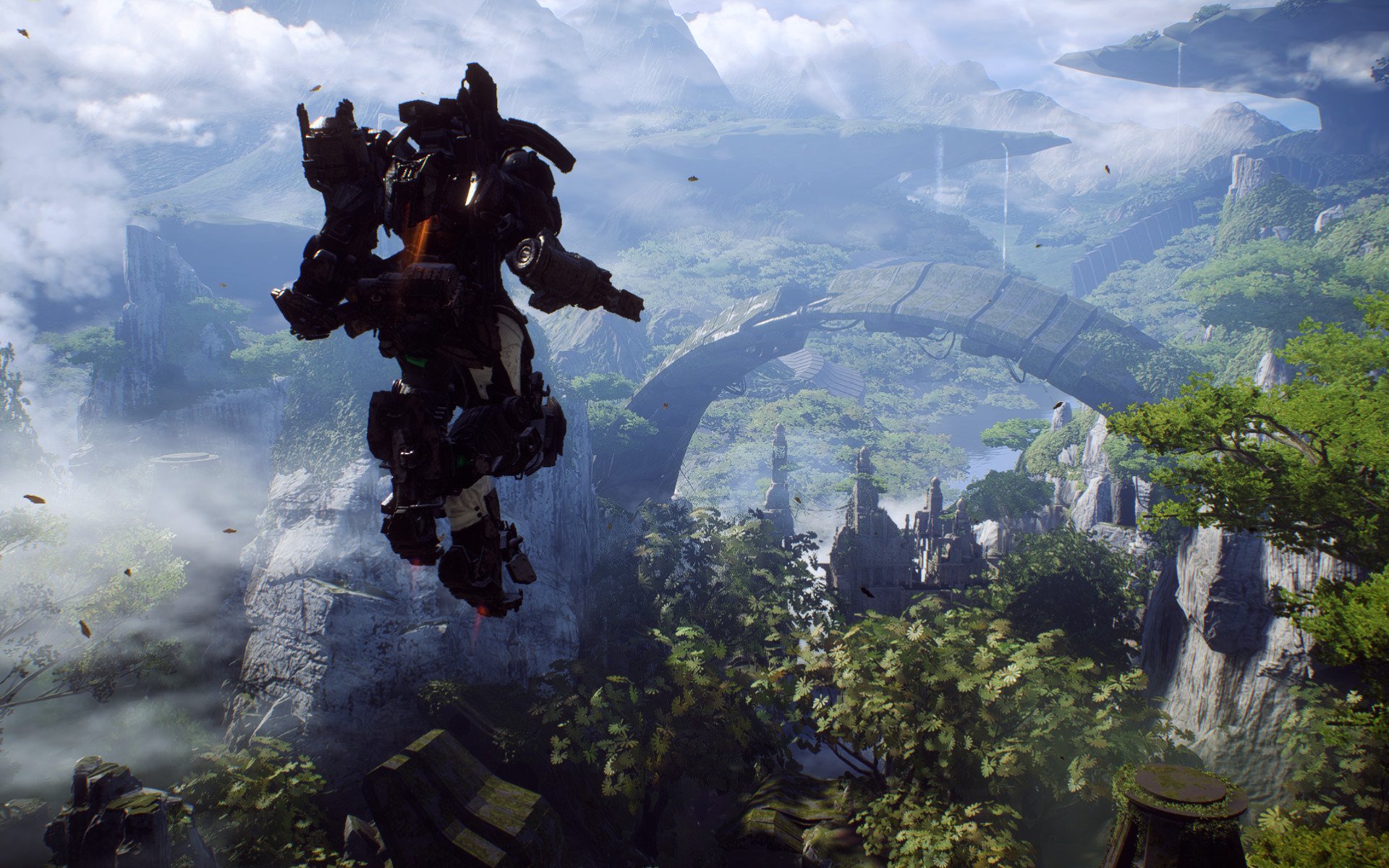
Anthem's open world is one of the absolute best things about the game. Lush forests, sprawling canyons, and rocky terrain all come together to create a massive space for players to explore in free roam. As you fly around the map, ancient temples, cities built into the sides of cliffs by outlaws, war camps constructed by aliens called Scars, and even wildlife (peaceful and hostile) all help characterize Bastion, which is Anthem's world. Bastion is a beautiful, dangerous place. As you roam these vast environments, you can really see that this is a world where humanity has had to fight, tooth and nail, in order to carve out an existence. It's one of the rare places in the game where BioWare succeeds in showing you things, and not telling you.
One of the things that help keep players busy during exploration are World Events, which are similar to the Public Events in Destiny 2. There's a healthy variety of objectives for them, such as repairing broken down vehicles, destroying a breeding ground for giant alien scorpions, or even battling huge brutes called titans. However, you can't see when they spawn on your map, which is a huge pain.
Overall, Anthem's open world is great.
Story and lore
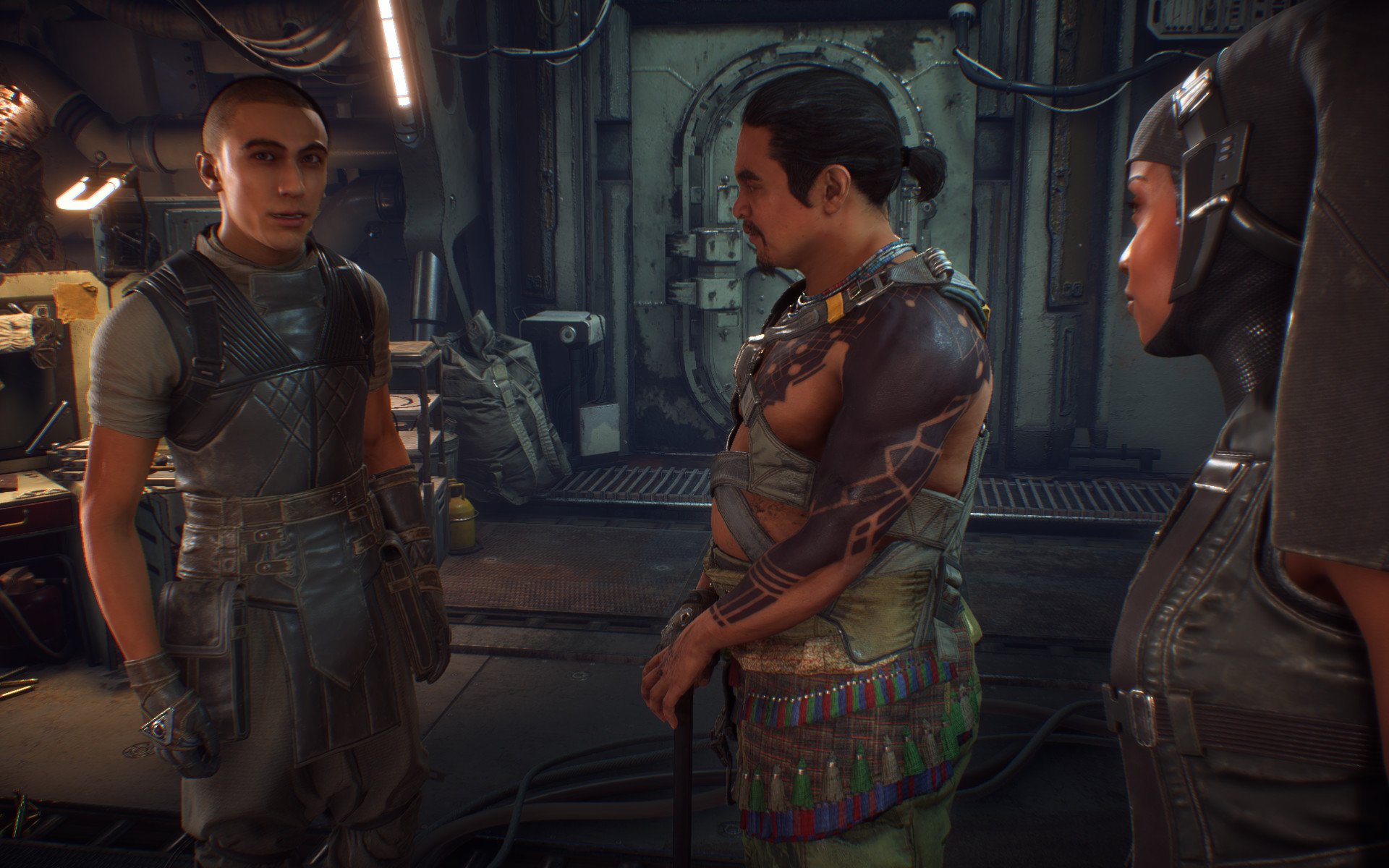
The story of Anthem is where things start to take a significant nosedive, and that's a shame because the tutorial mission does a fantastic job of setting the stage. In it, we see what happens when the power of the Anthem of Creation, a cosmic force responsible for making the world we're playing in, goes haywire. Massive beings the size of buildings awaken and rise from the earth, literally punching javelin pilots into the ground and killing them instantly. Cyphers, who can communicate mentally with javelin users over long distances, are driven mad by the Anthem's "songs," which can pierce their minds. The Dominion, a group of imperialistic humans, wish to control this power and use it against the Freelancers, a band of warriors that fight for freedom and peace. As a Freelancer, it's up to us to stop them.
This is an excellent setup for an exciting plot with memorable characters, but neither of these things exist within Anthem's 15-hour long campaign. The characters, though, are where Anthem's writers really dropped the ball.
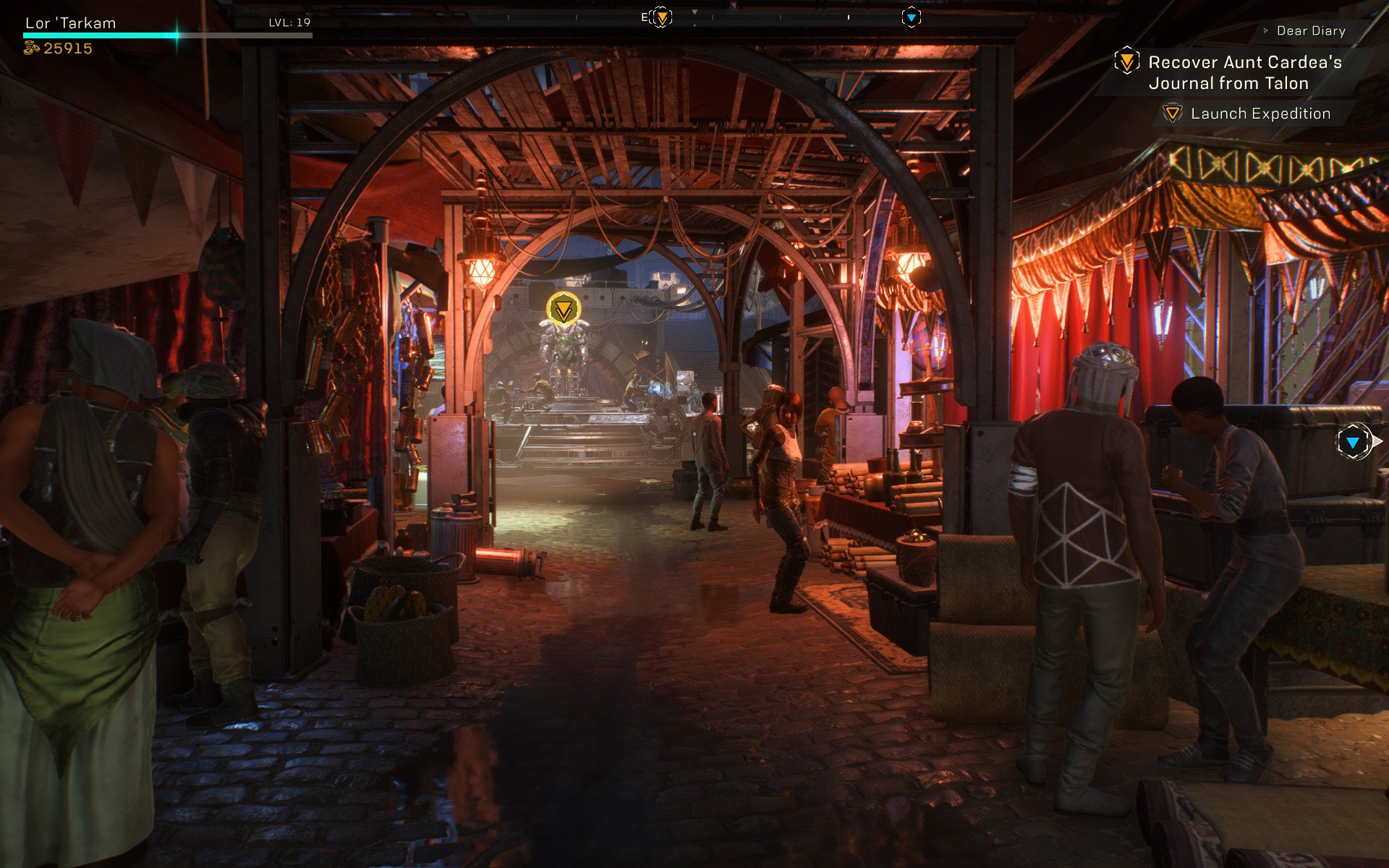
Even compared to Mass Effect: Andromeda, which I think is BioWare's worst Mass Effect title, Anthem's characters are abysmal. The vast majority of the time, their dialogue is so vapid and uninteresting that I can't help but reach for the "skip dialogue" key. The animations and voice acting are solid, but they can't hide a bad script.
Anthem's dialogue is so vapid and uninteresting that I can't help but reach for the "skip dialogue" key.
The roleplaying potential here is nonexistent. Gone are BioWare's high-quality speech trees — in their place is a pathetic system where you can only choose two responses, neither of which have impact or offer meaningful roleplay possibilities.
I suppose there is one silver lining to be found, though, and that's the moderately-interesting lore entries you can find dotted throughout the Fort Tarsis hub world, the open world, and the levels that helps flesh out the universe you're in.
Ultimately, as a long-time fan of BioWare, seeing them sink this low is depressing. I understand that multiplayer titles often never match the depth of singleplayer ones when it comes to writing, but BioWare still could have done so much more here.
Loot, progression and presentation

As a loot-focused game, rewards are an important aspect of Anthem. The rarer guns and equipment you can earn by grinding have unique perks and amazing stats that make it feel special, but the actual loot itself looks pretty generic. In fact, most of the high-tier items in the game look the same as other items, except they have a new coat of paint. Compared to Destiny's exotics that sport unique models and sounds, it really feels like Anthem could have done more here. Also, for some reason, you have to wait until a mission is over to see what loot you got, which is a strange design decision. Lastly, you aren't able to view or edit your gear anywhere outside of Fort Tarsis, which is a major annoyance.
The customization features for your javelins are excellent, though, allowing you to extensively change the colors and materials of your mechs, as well as apply vinyls.
Lastly, there's the endgame experience. Like other loot games, grinding the endgame is how you'll be pushing your power level higher. Overall, the endgame at launch is a mixed bag. Strongholds and Legendary Contracts are fun activities that encourage you to work with others and take on difficult challenges, especially when you can raise the difficulty to increase your chances at good loot drops, Diablo-style. However, they're designed the same way every other level in the game is, and I feel like there should be something truly unique waiting for players at the end of the game. It sounds like unique content is coming in an update in March.
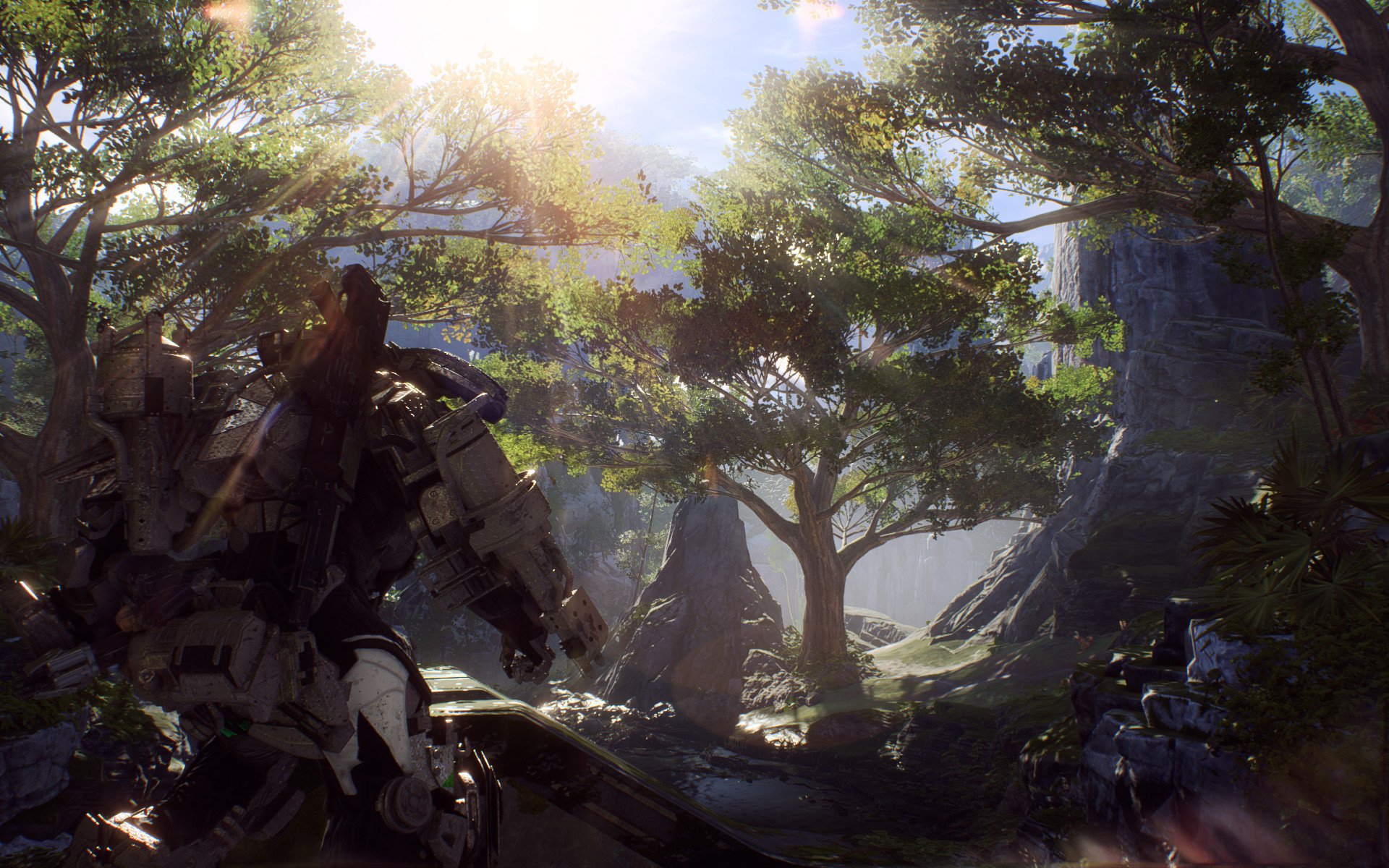
Anthem is one of the most beautiful games I've ever played. Its lighting effects are truly something to behold — walking through a forest and seeing the sun's rays peeking through the gaps in the branches had my jaw dropping. Everything else about the game, from the water effects to the texture work to the color palette, is all simply phenomenal as well.
Anthem is without a doubt one of the most beautiful games I've ever played.
Though not as impressive as the visuals, the music is quite good as well. Anthem's adrenaline-rush combat is perfectly complemented by the score's percussion-heavy action tracks, which do a great job setting the mood. When it comes to exploring the world of Anthem, the music takes a backseat to the game's sound effects, which brings alien wildlife, weather, and natural formations like waterfalls or rivers to live with rich soundscapes.
Technical performance and microtransactions
Anthem's technical performance, across both Xbox and PC, is a bit up and down. The framerate is smooth in the vast open world or during missions and combat, but strangely, the game often grinds down to 25 to 30 frames in Fort Tarsis on PC, struggling on Xbox One X as well. In addition to this, there's an annoying audio bug that causes all sound to cut out until you restart your game, which is grating, to say the least.
Worse than any framerate issues, though, are the maddening loading screens, which plague every aspect of the game. There are so many of them, and they last so long. Supposedly, the Day One patch fixes or reduces the above issues but we'll have to wait to see.
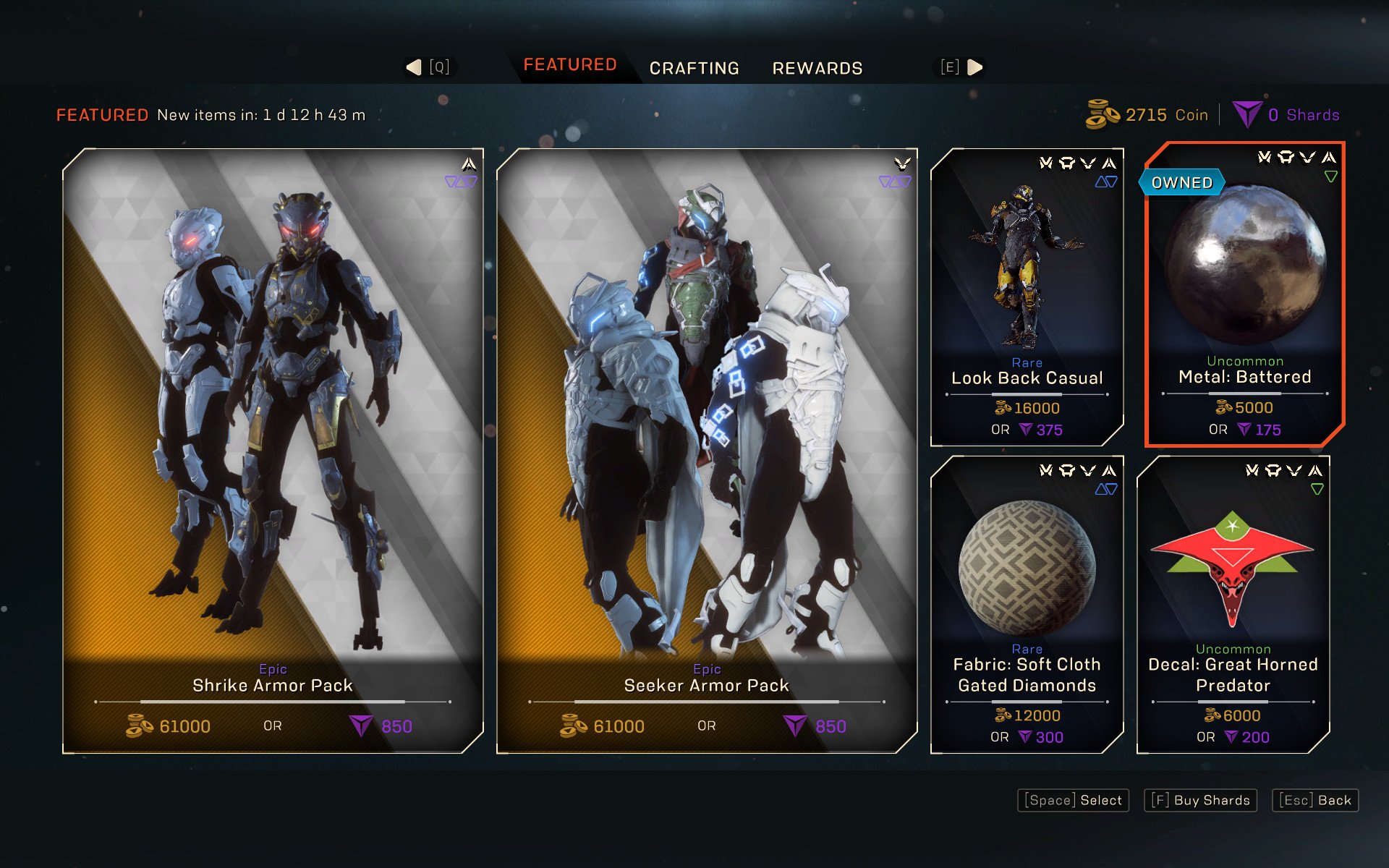
Anthem, as expected, features microtransactions. Thankfully, though, they're cosmetic only, with EA learning its lesson from the ill-fated Star Wars Battlefront II launch. The premium currency, Shards, seem fairly priced. You can find the exact rates here, but in short, $5 will net you emotes, vinyls, and materials, while the $10-and-above Shard purchases will enable you to buy armor sets. Of course, you can also opt to avoid paying money entirely and use the in-game Coin currency instead, which is given to players quite generously for a variety of objectives. As long as you take a handful of challenges from Fort Tarsis before playing missions, you can rack up thousands of Coin pretty quick.
So should you buy Anthem?
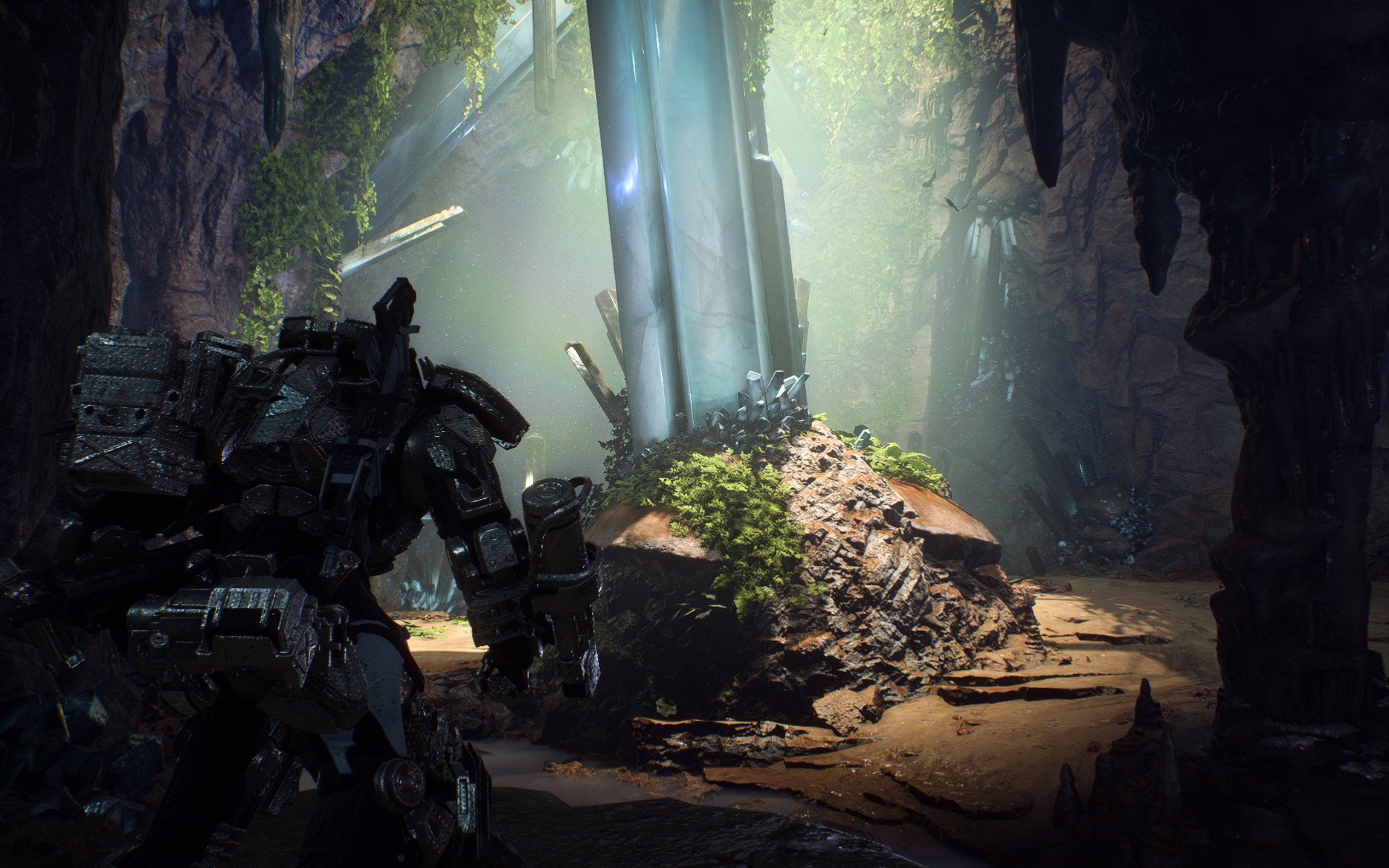
Despite the countless issues I have with Anthem, I would be lying if I said I haven't enjoyed my time with it. That being said, I think it would be best to wait for a while before purchasing Anthem, at least until we see what this update in March entails. While the story and writing can't be fixed in the short term, most of the other problems can.
Anthem's developers have been open and communicative with fans on social media, and that kind of openness gives me hope that Anthem will grow into an amazing game.
Anthem is available now on Xbox One, PlayStation 4, and PC for $59.99.
Brendan Lowry is a Windows Central writer and Oakland University graduate with a burning passion for video games, of which he's been an avid fan since childhood. He's been writing for Team WC since the summer of 2017, and you'll find him doing news, editorials, reviews, and general coverage on everything gaming, Xbox, and Windows PC. His favorite game of all time is probably NieR: Automata, though Elden Ring, Fallout: New Vegas, and Team Fortress 2 are in the running, too. When he's not writing or gaming, there's a good chance he's either watching an interesting new movie or TV show or actually going outside for once. Follow him on X (Twitter).
